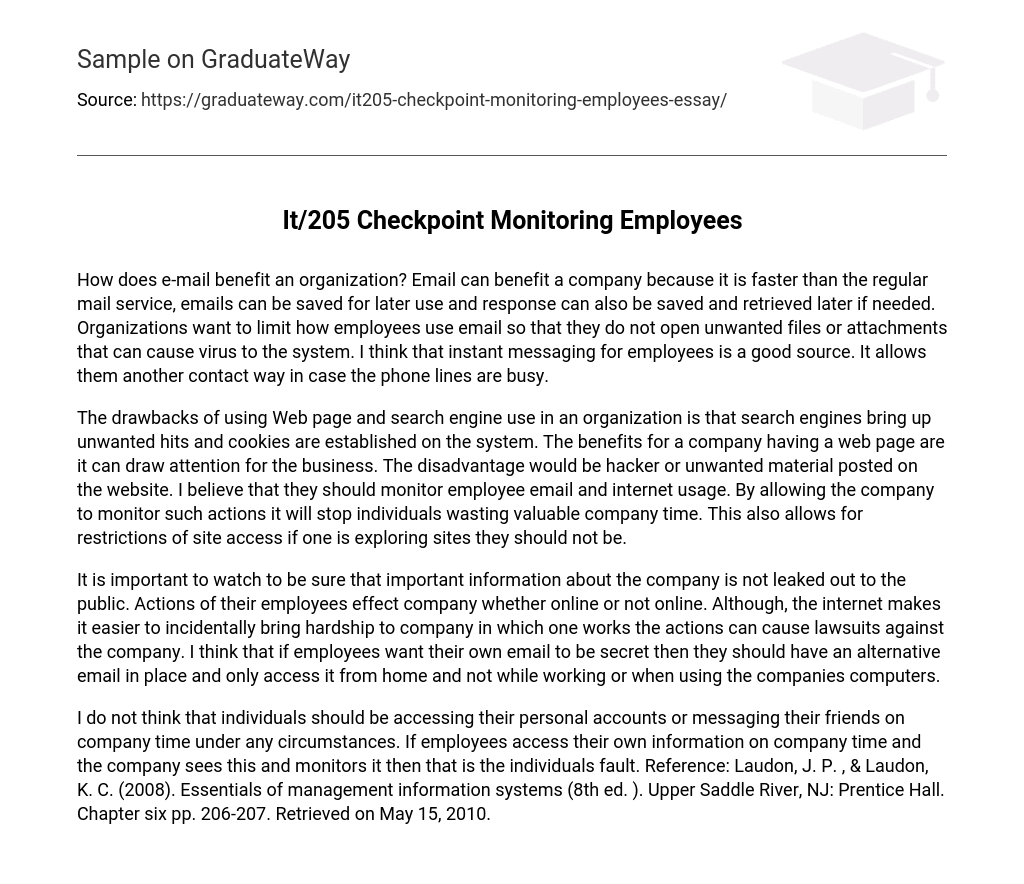How does e-mail benefit an organization? Email can benefit a company because it is faster than the regular mail service, emails can be saved for later use and response can also be saved and retrieved later if needed. Organizations want to limit how employees use email so that they do not open unwanted files or attachments that can cause virus to the system. I think that instant messaging for employees is a good source. It allows them another contact way in case the phone lines are busy.
The drawbacks of using Web page and search engine use in an organization is that search engines bring up unwanted hits and cookies are established on the system. The benefits for a company having a web page are it can draw attention for the business. The disadvantage would be hacker or unwanted material posted on the website. I believe that they should monitor employee email and internet usage. By allowing the company to monitor such actions it will stop individuals wasting valuable company time. This also allows for restrictions of site access if one is exploring sites they should not be.
It is important to watch to be sure that important information about the company is not leaked out to the public. Actions of their employees effect company whether online or not online. Although, the internet makes it easier to incidentally bring hardship to company in which one works the actions can cause lawsuits against the company. I think that if employees want their own email to be secret then they should have an alternative email in place and only access it from home and not while working or when using the companies computers.
I do not think that individuals should be accessing their personal accounts or messaging their friends on company time under any circumstances. If employees access their own information on company time and the company sees this and monitors it then that is the individuals fault. Reference: Laudon, J. P. , & Laudon, K. C. (2008). Essentials of management information systems (8th ed. ). Upper Saddle River, NJ: Prentice Hall. Chapter six pp. 206-207. Retrieved on May 15, 2010.





